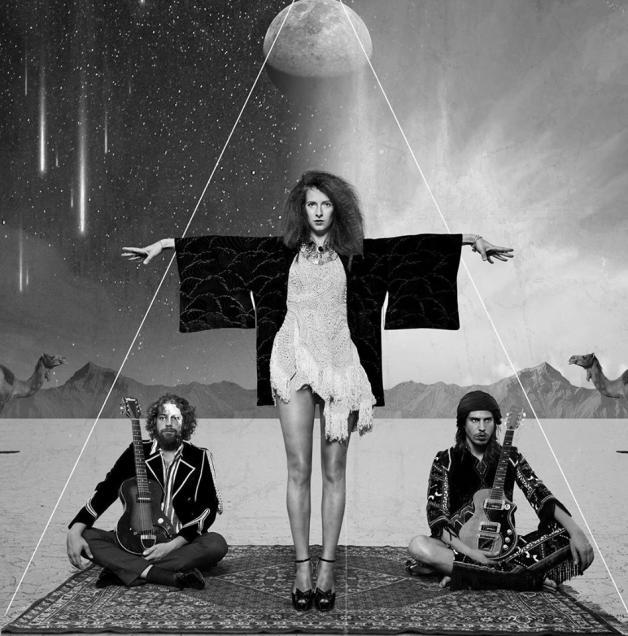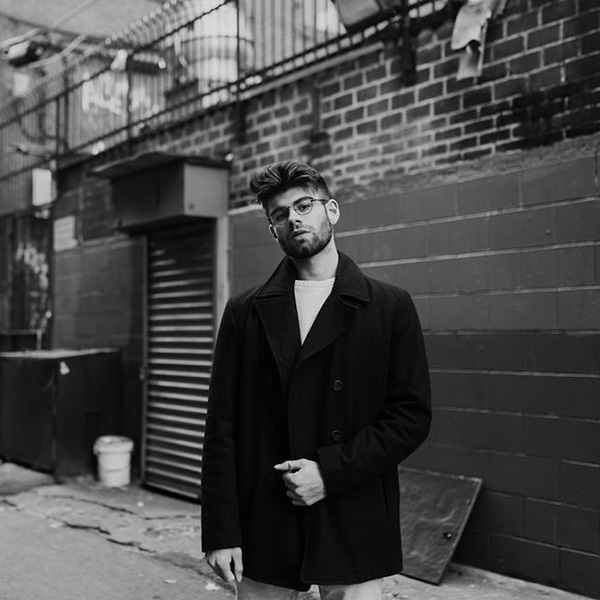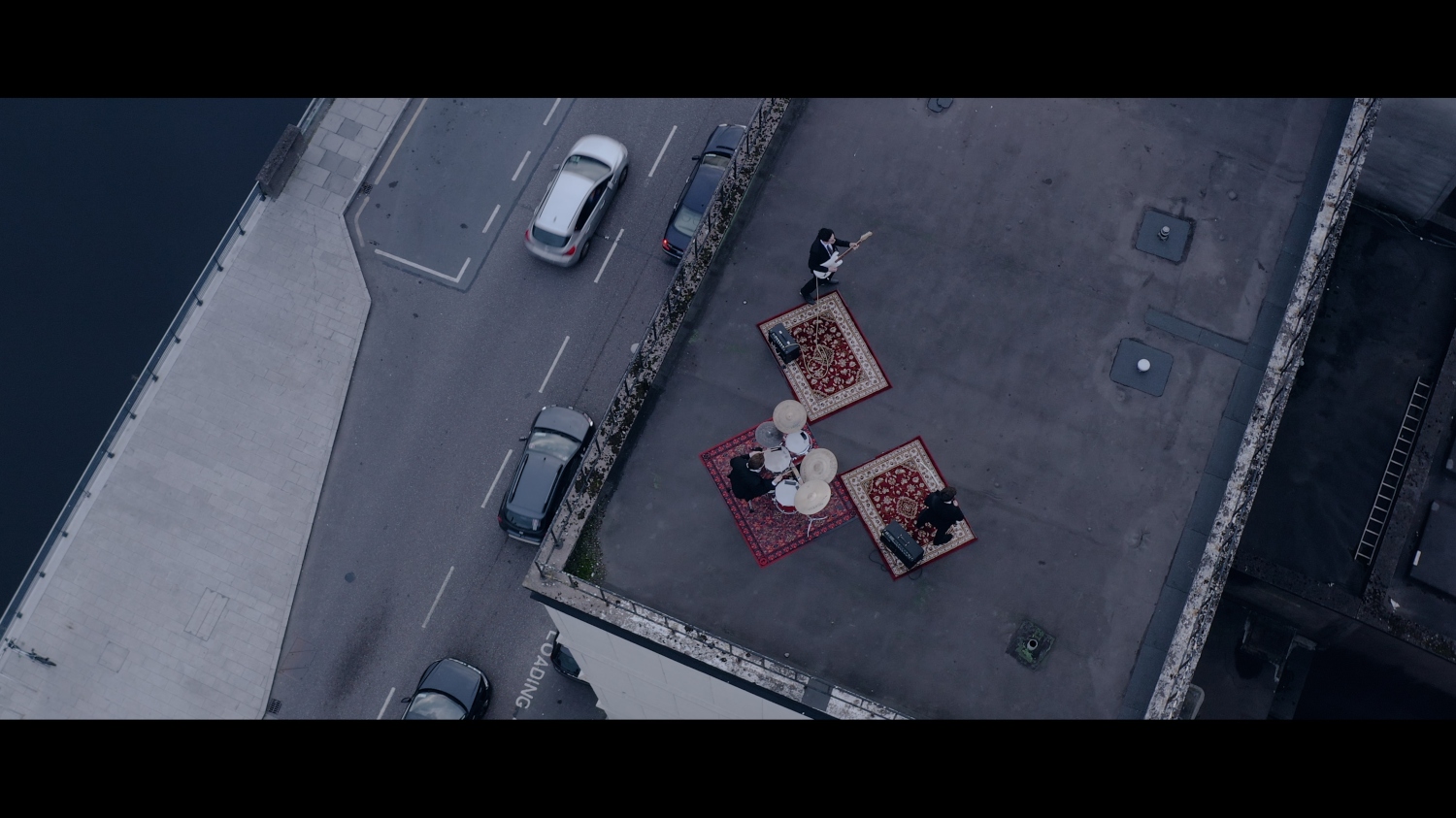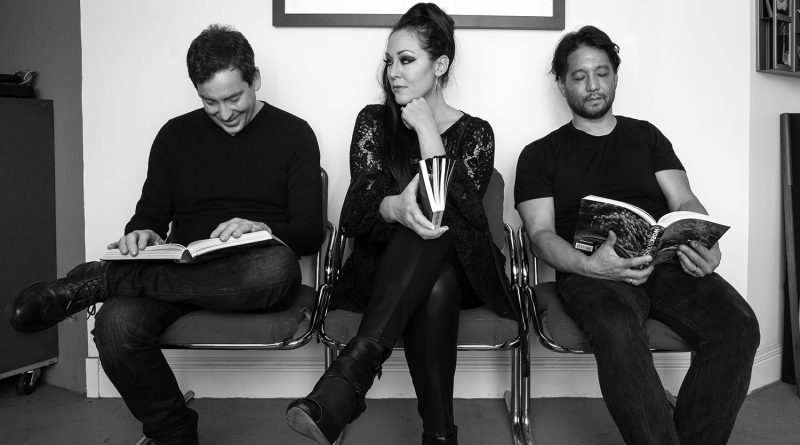5 minutes with… MY BABY
Amsterdam based psychedelic folk rockers, MY BABY are on an astronomic curve to glory. After a UK tour with Seasick Steve, who has appraised their unique approach, and the release of their second album ‘Shamanaid’, MY BABY has been spreading their mesmerizing live act to the approval of audiences worldwide; featuring on renowned festivals such as Glastonbury, Sziget and Lowlands.
MY BABY are ready to release their new single ‘Remedy II’ which is a re-worked version of Shamanaid‘s track ‘Remedy’. “We felt compelled to construct a new version of the song that is more informed by our ‘ live performance’ energy. A lot of people have requested such an experiment. We aim to deliver. I think it extends and adds to the meaning of the song“.
We caught up with Cato van Dyck, Joost (Sheik) van Dyck and Daniel (Da Freez) Johnson to talk music and their plans for the future..
Hi guys, how are you and what are you up to today?
Hi. Feeling rather smashed after another hectic weekend of gigs. So resting up and doing a bit of work at the office.
To those not familiar with you, how would you describe your sound?
My baby play a brand of psychedelic blues, folk and funk with a tribal dance groove. It’s a sound inspired by old blues and folk music, but played with the rawness of sixties and seventies soul and funk and an edgy trance like infusion of West African desert blues, Moroccan Gnawa, Indian ragas and dance music of all forms has helped to shape our sound. We call it a number of things, Delta Trance, Indie Funk or Louisiana Dub!
Can you the name albums and artists that have influenced you the most?
It’s important to list a number of pre-war blues artist like Skip James, Son House and Robert Johnson with “King of the Delta Blues Singers” album up front. The gospel of the Staple singers. Dr John’s “The Night Tripper”. Sly and the Family Stone is a prime influence, particularly in terms of live energy. Album wise “There’s a riot Goin’ on”(71) and “Fresh”(73) stand out. Bob Dylan and the Bands entire catalogue. English folk pioneers such as Bert Jansch, John Martyn and Nic Jones etc. Soul singers like Aretha Franklyn and Ann Peebles. And a big influence is the band Redbone, listen to “Potlatch”(70) to find out.
Which other artists are you into at the moment and why?
We tend to listen to a lot of “world music”. It’s about trying to find something that sounds different and to get inspired by that. Think of African influences like Rokia Traore, Bombino and the Dur Dur band to name but a few. We are also fascinated by Moroccan Gnawa and listened to an artist and group called Aziz Sahmaoui and University of Gnawa and last but not least Indian slide guru Debashish Bhattacharya.
It’s a constant search for the magic of old recordings and music of unknown cultures. There is a persuasive rhythm in trad dance music that links up to electronic dance and is something that we are undeniably influenced by.
And the magical ancient melodies and mystique of that folklore is something that we continually look for in terms of inspiration. A core idea of our existence as a band is seeking out new ways of putting people in a trance.
What would we find under the category of “Guilty pleasures” in your music collection?
Hard to categorize. So hard to answer. But I recently pulled out a copy of a Bette Midler album out of the vinyl collection. Don’t know how it got there. Not a fan but a quick listen to her doin’ Edith Piaff or Bob Dylan’s “Buckets of Rain” puts a smile on your face. As is the story I recently read about her brief fling with Tom Waits.
The UK music scene is certainly always changing. Some might say that at the moment it’s more electronic oriented. Do you think this makes it more difficult for indie/alternative acts to get recognition that it would have done ten years ago?
In terms of indie/alternative not so. That’s due to the fact that a lot acts are branching out into electronica. So there is a lot of overlap and cross fertilization. Perhaps it’s harder for bands that are rootsier but we have found a way to get some recognition so anything is possible.
If not the popularity of electronic music, what would you say some of the challenges indie bands face today in the music industry?
The most important challenge is earning a living and finding the time to invest in your musical career. Even moderately to reasonably successful artists still have part time jobs. Being indie generally also means you don’t get the support or financial advances as more established artists do or acts signed to majors. Luckily there are plenty of ways to get creative in order to get the funding together to enable an album release, video or tour through the web many options lie within your own grasp.
Where do you gather song writing inspiration?
More often than not by listening to music. Quite often together as a group. Writing sessions often occur after letting yourself be inspired by other music, or film or other arts for that matter. Sometimes it’s good to write whilst on tour or travelling. But you tend not to have the time to work on sketches. So only upon returning from touring you have the time to reflect.
Take us through your song writing process. Are there any particular steps you take when put music together?
There are many ways, for example, we tend to have sketches of music that Cato sings to without lyrics after demoing this we listen to her melodies afterwards and we play around with words that fit. Keeping in mind that you always have to search for elements which make the song tick, something which creates a certain depth that people can connect to. We also collaborate with others for our material. Getting together with other writers can open up a world of opportunity. You sometimes need to stretch your imagination by letting others get into your brain.
What’s the best gig you have ever done and why?
Luminate festival. On top of a crystal mountain in golden bay, New Zealand. Why? Because it was a magical journey through space and time. And a gathering of spirits getting together and igniting an eternal flame and inner consciousness and a collective sharing of genuine respect for our planet. And the worst!
If you weren’t a musician what would you be?
Daniel: A chef in a mental institute.
Joost: Would be in the mental institute.
Cato: Managing the mental institute, and a part time job as a waitress in a strip club. (she’s not the best pole dancer in the world)
Do you have any particular gigs or festivals that you dream about playing?
Of course there are some wonderful festivals in special locations. Fuji rock in Japan, Mardi Gras, Sasquatch in USA, Lake of Stars in Malawi, Montreauz Jazz, Øya Festival etc.
We also aim to take part at dance festivals as well. Hopefully we can perform at fests like Tomorrowland, Fusion or Boom in Portugal.
If you could perform alongside any other band or artist, who would it be?
Having already played alongside Larry Graham, Bassplayer of Sly and the Family stone, in the past and having toured with Seasick Steve it is apparent that the inspiration you draw from such an experience is rather profound. Looking ahead to the future it is hard to tell what might happen. But we would to collaborate with artist on recordings or live. For example Bombino, Dan Auerbach, and perhaps Sly Stone somehow. Finally…
Do you have any information regarding upcoming releases, projects or gigs in the pipeline that you would like to tell us about?
We are currently promoting our latest single “Remedy II” and will be touring the UK and the rest of Europe this autumn. The year has a grand finish at paradiso in Amsterdam on the 23 of December.
The following year will start with a tour to New Zealand in February. Daniel’s home and by now the bands second home. And a new release of fresh material will arrive sooner rather than later.



